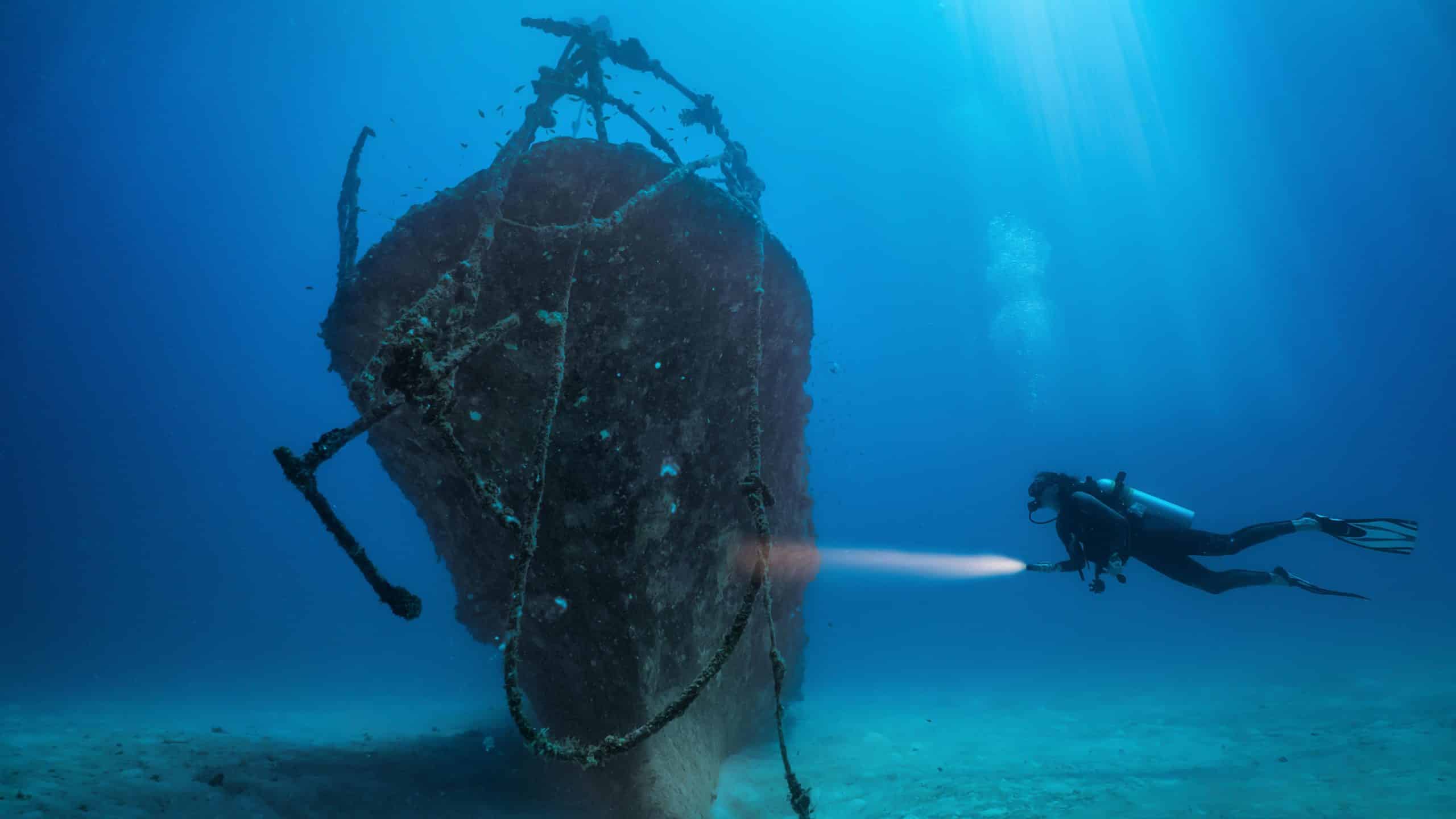The centenary wines saved, coincidentally or not, from the remains of some wrecks are either exhibited in museums or have become the attractions of some private collections, obtained by their new owners following some unique auctions, to which record amounts were offered.
Here are some of the stories of these wines, unique in their rarity.
Amphorae and Mamertino
Sicilian archaeologists in Palermo discovered, in the summer of 2021, an ancient Roman wreck loaded with amphorae used mainly to transport wine and olive oil. The ship from the second century i.Hr. sank near the Isola delle Femmine, in the Mediterranean Sea, and was located at a depth of about one hundred meters. On board the wreck there were a considerable number of wine amphorae (Photo: Soprintendenza del Mare).Authorities say the discovery is one of the most important in the region in recent years.
During the Romanian Republic, the wine trade in Sicily was one of the most profitable and widespread activities for local entrepreneurs. A type of Sicilian wine known as Mamertino had become so popular that it attracted the attention of Julius Caesar himself.
Amphorae appear in the load of many ancient wrecks. In May last year, another Roman ship was located, near the Sicilian island of Ustica. Discovered at a depth of 70 meters, the wreck contained a storehouse of amphorae filled with wine from the second century i.Hr.
The series of discoveries began in 2013, when authorities announced the discovery of a Romanian ship. Almost intact, the ship rested at a depth of about 50 meters off the Genoese coast. It was discovered that he was carrying around 50 amphorae, as reported at the time by the Agenzia Nazionale Stampa Associata.
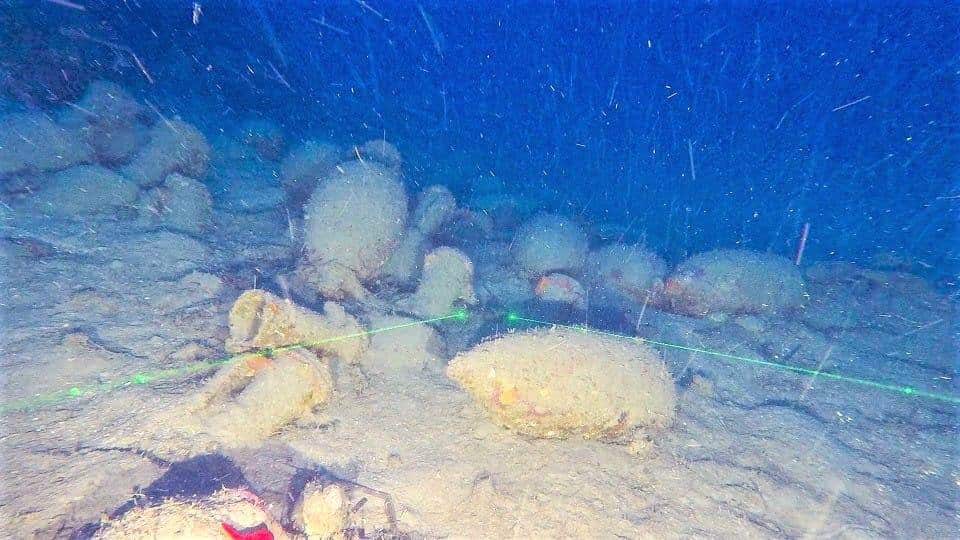
The surprise of the Baltic Sea
The wreckage of a beach submerged 50 meters deep, which has been on the bottom of the Baltic Sea since the middle of the nineteenth century, was discovered, in 2010, by several divers exploring the Finnish archipelago of Aland. Upon closer investigation, another surprise followed: several champagne crates, containing 168 bottles, 148 being intact. Of these, 47 were Veuve Clicquot champagnes, bottled between 1839 and 1841.
The excitement of the discovery led the divers to open one of the champagne bottles. They found that it tastes great, the environment in which the bottles were kept – cold and in full darkness – being an ideal one. A scientific study of the chemical composition of wine, carried out a few months later, showed that there are many common aspects between this nineteenth-century wine and modern champagne. The big difference was the high sugar content, a normal thing if we take into account the preferences of champagne consumers in the nineteenth century. In Russia – which was the most important customer of champagne houses – it was a natural thing for aristocrats to add sugar to wine for dinner.
With the help of a chemical analysis, a team of professionals compared the almost two centuries-old "Baltic wine" with a contemporary Veuve Clicquot champagne – that’s because chance made Veuve Clicquot a well-known brand, founded in 1772, which still exists today. The results of the analyses revealed that the champagnes recovered from the wreckage of the schooner had lower alcohol content and higher sugar content than the modern versions of the champagnes of the same company.
One of the bottles of Veuve Clicquot champagne was sold at an auction held in the Finnish city of Mariehamn to an anonymous auctioneer in Singapore, who paid for it 30,000 euros, which made this champagne reach the seventh place in the top of the most expensive such drinks in 2022.
The same buyer paid 24,000 euros for another bottle, from Juglar, a champagne house that closed its doors in the 1840s.
The price record for an 1820 Juglar champagne, coming from the same wreck, was $43,500, making it the fifth most expensive champagne in the world in 2022.
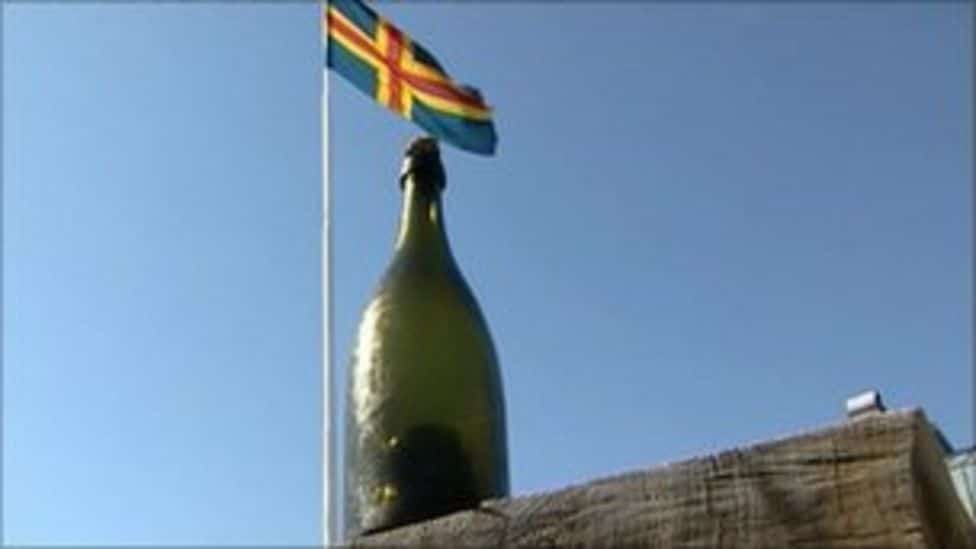
Smuggled wines, since 1862
Mary-Celestia, a ship built in Liverpool in 1862, was transporting prohibited goods to and from Confederate ports while trying to break the blocade of the Union on the South during the American Civil War. The ship was a ship rented by the Confederate army, but sailed under a variety of war names, to confuse the enemies (for example, Marie Celeste and Bijou) while trying to bypass the blockade. The ship was a fast one – it reached a speed peak of 17 knots – so we should not be surprised that it successfully overtook union ships while smuggling weapons, ammunition and supplies. In 1864, Mary-Celestia left for Wilmington, South Carolina, with a load full of food, ammo and wilderness, and sailed the south shore at 13 knots on a calm day, piloted by John Bristow Virgin. Surprisingly, it sank in just seven minutes on the southern reef of Bermuda. Speculation about the sinking continues to this day.
In 2011, a team of international archaeologists discovered five bottles of wine, intact, hidden in the bow of the ship. This surprise followed a few months after a first bottle of wine had been found in the wreckage area, following a series of storms that removed the sand from the site.
The discovery suggests that the lockdown ship, which was used to carry weapons to British-backed Confederate forces during the US Civil War, was also involved in the illegal wine trade.
Mary Celestia is a wreck with historical significance for Britain, where it was built, bermuda – where it operated and where it sank – and the United States, where it worked during the Civil War.
In 1884, Arthur Conan Doyle wrote the short story "The Statement of J. Habakuk Jephson", in which he spelled differently the name of the ship: Marie Celeste. The popularity of the story made this name more common than the original.
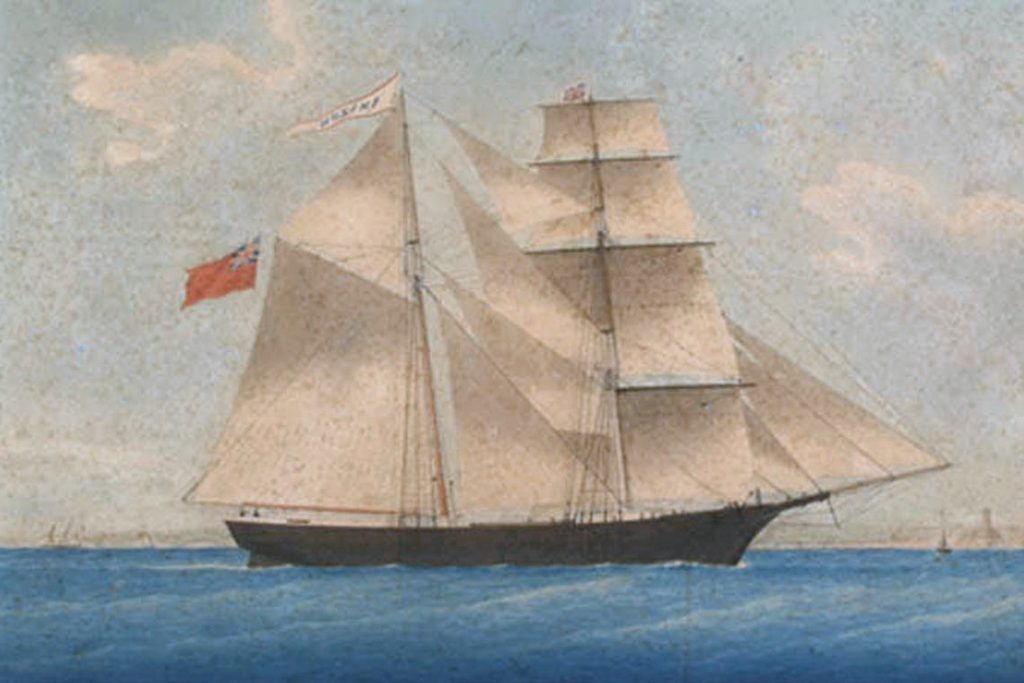
A naval incident from 1909
In 1909, a naval incident compared, over the years, with that of the Titanic, awakened vivid emotions, although the loss of human life was far from comparable.
RMS Republic, a transatlantic White Star, collided with SS Florida and its sinking could not be avoided. Underwater explorations in the 80’s led to a massive recovery of Moet & Chandon and Dom Ruinart champagnes, Bordeaux wines and several white wines of unknown origin. The balance sheet regarding the fate of the recovered bottles varies, depending on the source. Martin Bayerle organized an expedition in 1987 to explore the sunken wreck of RMS Republic off the Nantucket coast, hoping to find gold. Over $2.5 million was invested in the expedition. To the disappointment of marine archaeologists, only bottles of wine were recovered. The fact is that the divers who participated in an expedition to recover the liquid treasures from this wreck, in 1987, had the privilege of tasting the vintage Moet & Chandon 1898 and declared themselves delighted.
Not the same happened with the experts of the christie’s auction house. When they were given the opportunity to taste them, they considered that the wines did not meet the minimum standards for drinking.
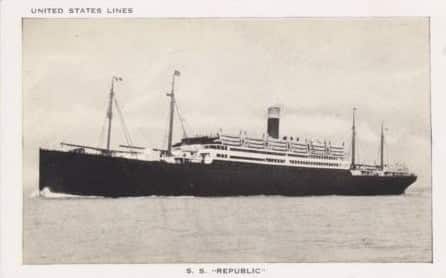
Speculation and speculation in the wreck of the Titanic
When the RMS Titanic sank, on April 14, 1912, the ship was carrying thousands of bottles of beer, wine and champagne – Monopole was the official champagne on board. Many of them are still today on the bottom of the Atlantic Ocean, unopened and maybe even good to drink. According to the documents, the Titanic was supplied with 1,500 bottles of wine and 8,000 cigars, and that’s only for first-class passengers. It is said that on board there were, at the time of the sinking, no less than 10,000 bottles of wine.
In 1985, an expedition led by marine archaeologist Robert Ballard discovered some of the several thousand bottles of wine listed. Those who had the chance to taste the champagnes, confessed that they have kept, spectacularly, their effervescence.
The champagnes that were said to have been recovered in good condition 73 years after the shipwreck were the Heidsieck Gout Americain champagnes, from 1907. These were known in the era and under the name "American Taste" – a name that actually designates a much sweeter version of the drink.
The fact that no published report specified how many good bottles were recovered left room for speculation. For example, in 2004, it was rumored that six bottles of this batch were sold to a wealthy Asian collector.
The secret of the taste of these champagnes would have been lost forever, but by chance, the same Hiedsieck champagne from 1907 was discovered and recovered from another sunken ship, in 1998.

A torpedo with delayed effect
In 1916, during the First World War, a Swedish cargo ship, The Jonkoping, was to deliver to Tsar Nicholas II of Russia seventeen thousand barrels of Burgundy, three thousand bottles of champagne and tens of thousands of bottles of cognac. On the route, however, it was intercepted by an enemy German submarine, which torpedoed it, and the ship sank within hours. Chance made the precious load remain, for the most part, intact. Most of the bottles were perfectly preserved in ice-cold water until 1998, when 2,000 bottles of champagne were recovered in 1907 Heidsieck & Co. Monopole. Tasted by the experts employed by Heidsieck, the champagnes stood the test of time: they were described as balanced and effervescent.
It was found that the recovered bottles are from the same batch of champagne as those on the Titanic. Later, bottles of this rare batch were sold at Atlas Bar in Singapore for US$190,700 bottle. Legend has it – because it has never been proven – that there were a few bottles available in other places frequented by the billionaires of the day – such as the Ritz-Carlton Hotel in Moscow – at the fabulous price of 275,000 US dollars bottled.
Government bans recovery of centenary wine
Off the coast of Britain, other bottles of wine, a century old, are waiting to be recovered. The wreckage of the SS Libourne, which sank during The First World War off the Cornish coast, contains bottles of red and white wine. The merchant ship was sunk by the German Navy when it was traveling from Bordeaux to Liverpool in 1918. Mirror UK found that the wreckage contained about 10,000 bottles of wine and other alcoholic beverages.
The wreckage was discovered and photographed by divers from the "Darkstar" team in 2015. The divers recovered a few bottles of wine, but were unable to secure the ship’s cargo.
The group of divers formally asked the authorities for permission to bring the wine bottles to the surface, but the request was rejected by the English government. The underwater wreck is protected by several laws. According to The Mirror UK, a 2001 UNESCO decision, respected by the British government, prevents the team from gathering artifacts for commercial gain.
Once recovered, the bottles could sell for millions of euros, according to Metro UK. Divers Ian Hudson anticipates that these bottles will reach up to £25,000 each.
In conclusion, the incredible prices offered for certain wines recovered from the wrecks are, in part, justified by the rarity and the historical conjuncture. One thing is certain: history has shown us that when the god of wine, Dionysus, leaves a few bottles in the care of the god of the seas and oceans, Poseidon, and Cronos, the god of time, forgets about them, Mercury, the god of commerce, rubs his hands with joy.

